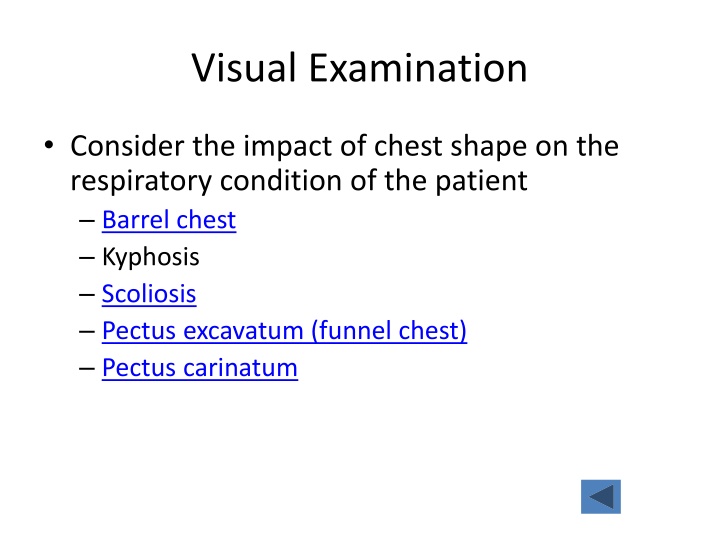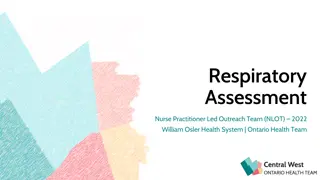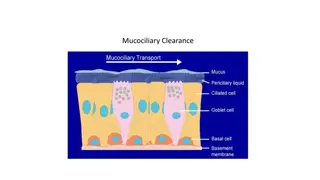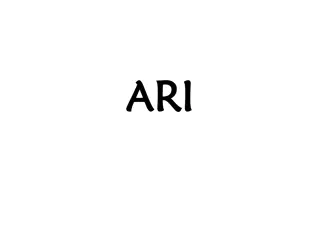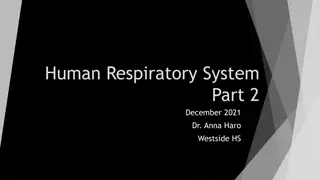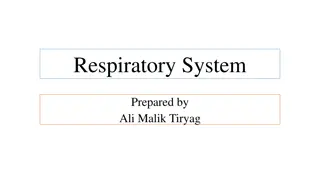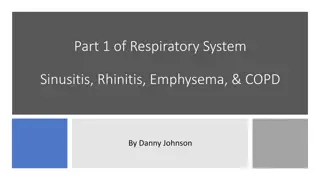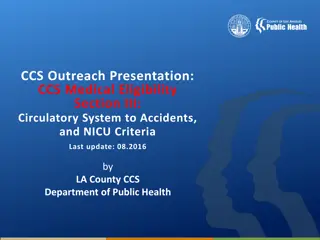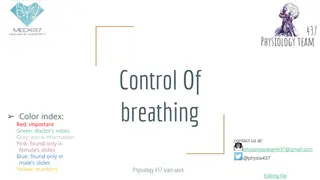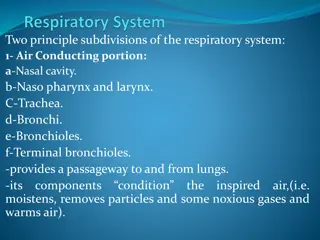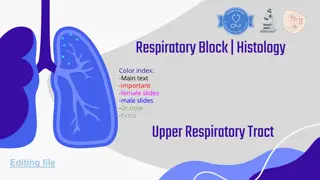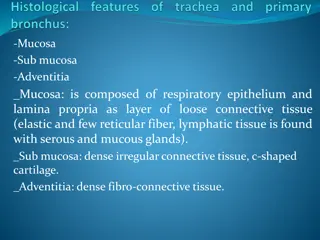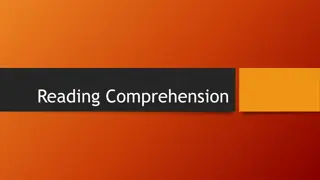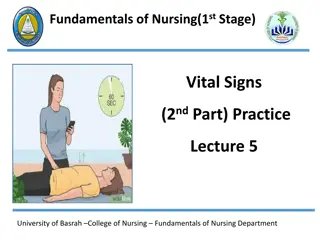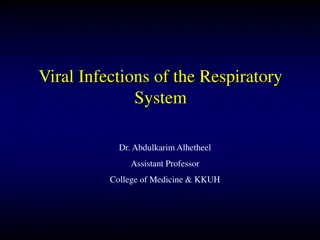Comprehensive Visual and Physical Assessment Techniques for Respiratory Conditions
This comprehensive guide covers the visual, palpation, auscultation, percussion, and pathological processes involved in assessing respiratory conditions. It discusses the impact of chest shape variations like barrel chest, kyphosis, scoliosis, pectus excavatum, and pectus carinatum on respiratory health. Various assessment techniques including examination for thoracic scars, accessory muscle use, breathing patterns, and breath sounds are detailed to help diagnose conditions like asthma, COPD, pulmonary fibrosis, and pleural effusion.
Download Presentation

Please find below an Image/Link to download the presentation.
The content on the website is provided AS IS for your information and personal use only. It may not be sold, licensed, or shared on other websites without obtaining consent from the author.If you encounter any issues during the download, it is possible that the publisher has removed the file from their server.
You are allowed to download the files provided on this website for personal or commercial use, subject to the condition that they are used lawfully. All files are the property of their respective owners.
The content on the website is provided AS IS for your information and personal use only. It may not be sold, licensed, or shared on other websites without obtaining consent from the author.
E N D
Presentation Transcript
Visual Examination Consider the impact of chest shape on the respiratory condition of the patient Barrel chest Kyphosis Scoliosis Pectus excavatum (funnel chest) Pectus carinatum
Visual Assessment of Thorax Thoracic scars from previous surgery Chest symmetry Use of accessory muscles Bruising In drawing of ribs Flail segment Paradoxical breathing /seesaw breathing Pursed lip breathing Nasal flaring www.nejm.org/doi/full/10.1056/NEJMicm0904437
Palpation For vibration of secretion Surgical emphysema Symmetry of chest movement Tactile vocal fremitus Check for a tracheal tug Palpate Nodes http://www.ncbi.nlm.nih.gov/books/NBK368/ https://m.youtube.com/watch?v=uzgdaJCf0Mk
Auscultation Is there any air entry? Differentiate Normal vesicular sounds Bronchial breathing Wheeze Distinguish crackles Fine Coarse During inspiration or expiration Profuse or scanty Absent sounds Vocal resonance http://www.easyauscultation.com/lung-sounds.aspx
Percussion Tapping of the middle phalanx of the left middle finger with the right middle finger Sounds should be resonant but may be Hyper resonant Dull Stony Dull http://stanfordmedicine25.stanford.edu/the25/pulmonary.html
Pathological Process Expansion Mediastinal Displacement Percussion Note Breath Sounds Further Examination Reduced on affected side None Dull Bronchial breathing Consolidation Vocal resonance Whispering pectoriloquy Reduced on affected side Towards affected side Dull Reduced None Collapse Reduced on affected side Towards opposite side Stony dull Reduced/ Absent Occasional rub Pleural effusion Empyema Reduced throughout None Resonant Normal/ Reduced Wheeze Asthma Reduced throughout None Resonant/ Hyper-resonant Normal/ Reduced Wheeze COPD Normal or reduced throughout None Normal Normal Bibasal crepitations Pulmonary Fibrosis Reduced on affected side Towards opposite side Hyper-resonant Reduced/ Absent None Pneumothorax http://www.cram.com/flashcards/test/lung-sounds-886428 sign up and test yourself.
